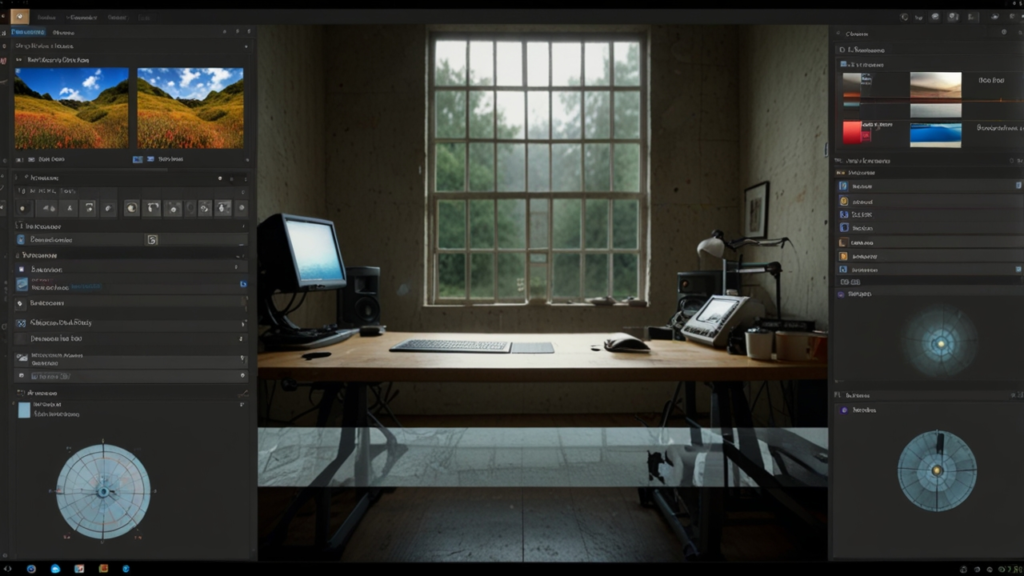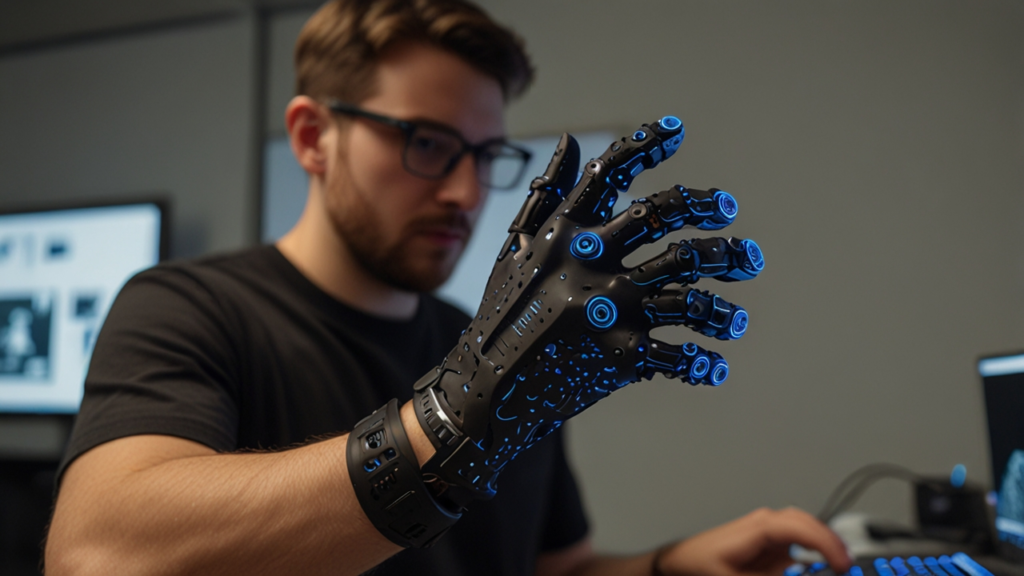Photo editing: What Are 8 Essential Techniques?
Photo editing has transformed the way we capture memories and create visual stories. Over the decades, techniques have evolved from manual darkroom adjustments to sophisticated computer algorithms that bring creative freedom. This process impacts everything from professional photography to everyday smartphone captures.
The journey of transforming raw images into polished final products involves both creative intuition and technical expertise. As technology advanced, the tools available for editing have become more accessible, allowing an ever-expanding audience to participate in the art of visual transformation. Today, editing is as much about precision as it is about creative expression.
Modern editors balance technical adjustments with artistic vision. Brands, professionals, and social media influencers alike rely on these techniques to enhance aesthetics and communicate clear narratives. For more information, explore the Mobile & Gadgets category.
Table of Contents
Introduction to Photo editing
Defining the Art and Science
The history of transforming images into final works of art has deep roots. Early photography required tedious manual interventions such as dodging and burning in darkrooms, laying the foundation for modern techniques. Today’s process integrates both creative artistry and scientific precision, offering a balance between the two.
In this transformative journey, programs like Adobe Photoshop, launched in 1990, set the stage for high-end image manipulation. Users appreciated the capability to adjust exposure, balance colors, and retouch images. Have you ever experimented with these historical techniques in your own creative projects?
The concept of editing is continually evolving, offering both traditional hands-on methods and emerging automated features. This combination allows professionals and amateurs alike to produce refined images previously limited to studio experts. For more insight on innovative practices, check out Innovative Solutions.
Modern Relevance and Accessibility
Over the past few decades, technological advancements have made editing accessible to a broader audience. The emergence of smartphones and digital cameras has made this process part of everyday life. With user-friendly applications, nearly anyone can transform a snapshot into a polished image.
This democratization has led to an explosion of creativity. Features such as AI-driven object removal and automated style transfers now supplement manual interventions. Do you recall the last image you perfected on your device?
These modern tools reduce the time needed for adjustments while maintaining high-quality results. Many editing apps now cater to those who seek both snap-and-share convenience and detailed manual control. The enhanced user experience continues to ensure that editing remains vital for all levels of expertise.
Evolution and History of Photo editing
From Darkrooms to Digital
The evolution of editing spans from early darkroom techniques such as dodging and burning to today’s digital breakthroughs. In the mid-20th century, modifying images was a manual labor intensified by precision work. Photographers used physical tools and chemical processes to manipulate light and shadow.
With the introduction of computers, the shift to digital manipulation began. Programs like Adobe Photoshop not only revolutionized the fields of image retouching and compositing but also paved the way for generative techniques enabled by artificial intelligence. Have you ever considered how these historical methods influenced modern creativity?
This progression illustrates a fascinating journey that blends art and technology. For detailed technical insights, you can refer to the YouTube tutorial on modern editing techniques.
Technological Milestones and Regional Influences
Technological milestones have continually redefined image handling. Regions like Europe, Japan, and Australia have each contributed unique aesthetics and ethical standards concerning editing practices. The rigorous approach in Asia contrasts with Western minimalism, influencing how features such as color balance and composition are developed.
For instance, Asian markets favor cooler, porcelain tones, while Western markets often prefer minimalistic compositions. These cultural nuances impact both software development and editing trends. What regional influences have you noticed in contemporary design?
With each decade, emerging technologies have introduced automated corrections and personalized enhancements. Such influences signify the global impact of historical trends on modern digital practices. Explore more on evolving trends at Digital Transformation.
How Image enhancement Enhances Photo editing
Techniques for Achieving Perfection
Image enhancements have become crucial in achieving the desired visual appeal. Core techniques involve exposure adjustment, color balance shifts, and selective retouching to remove distractions. Using sliders, histograms, and curves, each modification contributes to an overall refined look.
Advanced functionalities like AI-powered generative erase or cropping demonstrate rapid, efficient improvements that were once unthinkable. Modern software blends manual precision and automated tasks for an optimal workflow. Have you tried adjusting these parameters on your favorite editing app?
These techniques have been instrumental for professionals, particularly in industries requiring precision such as real estate and product photography. Discover detailed methodologies in resources like the Appy Pie guide.
Balancing Manual and Automated Processes
Combining manual control with AI-driven features creates a synergistic editing process. Traditional software like Photoshop remains preferred for granular control, yet AI tools now streamline repetitive tasks. This blend allows for rapid adjustments without sacrificing quality.
For example, in product photography, automated background masking and defect removal help speed up workflows while maintaining consistent aesthetics. How do you feel about the rising reliance on automation in creative projects?
Editors today can choose between precise manual tweaks and efficient automated corrections. This balance supports creative professionals in meeting tight deadlines and ensuring consistency across large batches of images. Learn further details at Technology Insights to see how innovative combined methodologies are shaping the future.
Visual correction Systems and Their Applications
Enhancing Lighting and Composition
Visual correction systems are vital in managing brightness and composition. Tools like histogram adjustments ensure optimal brightness, while cropping and perspective corrections assist in refining image structure. Such controls are essential in categories like real estate, where precise line straightening can boost appeal.
Leading software offers both subtle manual tweaks and automated corrections to support visually appealing outcomes. Have you ever tweaked your image’s exposure using slider controls?
Moreover, software features aid in adjusting dynamic range, balancing highlights with shadows to produce detailed landscapes and portraits. For a detailed breakdown, check the methodology on REI Expert Advice.
Detailing and Noise Management
Managing noise and sharpening details are crucial components of visual correction. Editors apply algorithms to reduce grain in low-light images and enhance clarity without over-sharpening. These adjustments are particularly important in wildlife and travel photography, where lighting conditions vary significantly.
The balance between clarity and artifact prevention is achieved through iterative testing and advanced sliders. Do you often find yourself fine-tuning sharpness for a crisper image?
By reducing noise and refining textures, images become more lifelike and compelling. This detailed approach underlines the importance of consistency and precision in each correction step. For more insights on managing such factors, you can visit Tech Innovations.
Real-World Case Studies of Photo editing
Industry Applications and Client Success
The real-world impact of advanced editing techniques can be seen in several industries. In real estate, for example, the use of HDR, object removal, and virtual staging has boosted property sale rates by up to 30% compared to listings with unedited images. This statistic highlights the significant value added by these methods.
Similarly, product photography relies on defect removal and background masking for consistent branding. Have you ever noticed a dramatic difference in property listings or product photos after using editing tools?
One notable case is ON1 Photo RAW 2025, whose AI-powered “Generative Erase” and “Generative Crop” tools enable rapid removal of distractions. Such advancements illustrate the merging of automation and creative control for tangible commercial benefits. Additional details can be reviewed on real estate techniques.
Comparison Table of Success Stories
A comparison of various successful editing applications provides further context. The table below summarizes diverse case studies, highlighting inspiration, application, and regional impact. Each example demonstrates how strategic editing techniques lead to measurable success.
Comprehensive Comparison of Case Studies
| Example | Inspiration | Application/Impact | Region |
|---|---|---|---|
| ON1 Photo RAW 2025 | AI Integration | Faster distraction removal; productivity up by 20% | Global |
| FilterPixel | Signature Presets | Consistent visual branding; increased client retention | Americas/Europe |
| Korean Beauty Industry | Advanced Retouching | Standardized skin smoothing techniques; global influence | South Korea/Asia |
| Australian Real Estate | HDR and Virtual Staging | Property sales boosted by 30% | Australia |
| Product Photography | Defect Removal | Enhanced product appeal and consistent color correction | Global |
The comparison clearly shows a trend where automated processes complement manual precision to deliver outstanding results. Have you experienced a significant turnaround in your projects after applying these strategies? For further insights on success stories, explore resources at Digital Living.
Picture refinement in Modern Photo editing Solutions
Optimizing Texture and Detail
Picture refinement has become synonymous with achieving a polished final look. Techniques such as texture manipulation and noise reduction are crucial when enhancing the visual appeal of images. By utilizing clarity sliders and frequency separation, editors manage surface details to ensure a balanced presentation.
These refinements are particularly essential in portrait photography, where skin tone and texture require meticulous adjustments. Do you find yourself spending extra time on subtle details to achieve perfection?
The interplay between texture softening and detail enhancement is central to modern editing. The fine balance allows images to appear natural while still conveying an artistic flair. This approach is prevalent in high-end retouching where both subtlety and impact are paramount.
Sharpening and Dynamic Range Management
Dynamic range optimization and selective sharpening contribute significantly to picture refinement. Editors often use HDR merging and contrast curves to balance the lightest and darkest parts of an image. This not only enhances overall clarity but also preserves the natural ambiance of the scene.
In cases such as landscape photography, maintaining dynamic range is key to capturing the full spectrum of natural light. Have you ever experimented with blending techniques to perfect your image’s balance?
By selectively applying sharpening techniques, detail becomes more defined without creating artifacts. Understanding these precise controls allows professionals to produce images that captivate the viewer. Advanced tools now ensure that while every detail is enhanced, the authenticity of the original image is maintained.
Future Trends: Digital retouching and Beyond
Emerging AI Integration and Personalization
The future of editing points to increased AI integration. Advancements in machine learning enable automated content fill and style transfers, reducing manual intervention. These developments indicate a move towards personalized editing experiences where software adapts to user preferences.
Emerging technologies allow editors to automate repetitive tasks while still leaving space for creative input. Do you feel prepared for a future where automation might redefine your workflow?
As AI tools become more prevalent, the ability to tailor batch processing to individual styles will provide an edge. This evolution is expected to further blur the lines between manual and automatic editing, ensuring a seamless, intuitive experience for creators.
Cross-Platform Collaboration and Ethical Considerations
Future trends also indicate a shift towards greater collaboration through cloud-based platforms. Cross-platform editing allows teams globally to work in real time, fostering synergy and innovation. This interconnectedness is accompanied by growing discussions about ethical editing and transparency in visual communications.
In regions with strict advertising and journalistic guidelines, ethical standards are expected to tighten further. How do you view the balance between artistic freedom and ethical disclosure?
With the convergence of global standards and the rise of hybrid aesthetic styles, future editing practices promise both innovation and accountability. These shifts will challenge users to continually refine techniques while remaining true to ethical norms.
Photo editing Spotlight: A Creative Snapshot
This section offers a vivid narrative on the evolution of creative solutions that captivate audiences. In recent years, technological progress has sparked an impressive transformation in the way visuals are manipulated. A surprising insight is how the practical blend of manual expertise and automated processes has unlocked previously unimaginable creative realms. As professionals and hobbyists experiment with new workflows, there is a palpable shift towards streamlined yet expressive production methods. With an increasing reliance on smart technology, the creative journey now embraces both technical precision and a renewed sense of artistic freedom.
Feedback, varied techniques, and the ever-changing digital ecosystem continue to fuel innovative thinking. In this dynamic environment, every adjustment signals a thoughtful interplay between print and pixel. The resulting outcomes often leave viewers inspired by the delicate balance of nuance and clarity. This cutting-edge approach pushes boundaries and offers fresh perspectives on conventional practices. Readers are encouraged to reflect on their personal experiences and the ever-evolving techniques that shape their projects, as each nuance paves the way for a promising future in creative craftsmanship.
The energy of innovation invites a fresh look at the way digital creativity is expressed, highlighting that the next breakthrough may be just one insightful experiment away. Embrace the moment and let this creative surge propel you toward new horizons.
FAQ
What is the historical significance of early editing methods?
Early editing involved manual darkroom techniques such as dodging and burning to modify exposure, setting a foundation for the advanced digital practices of today. These methods have evolved into a blend of artistic creativity and technical precision.
How has automation impacted editing practices?
Automation through AI and machine learning has transformed repetitive tasks, making complex edits like object removal and style transfers much faster while allowing creative professionals more time for fine-tuning artistic decisions.
Which industries benefit the most from refined visual correction?
Industries such as real estate, product photography, and portraiture see significant benefits. Enhanced image clarity, dynamic range adjustments, and precise retouching help to boost aesthetics and ultimately affect customer engagement and sales.
How does cultural influence shape editing trends?
Different regions contribute distinct approaches. For example, Asian markets favor perfection and stylized aesthetics, while Western markets often lean towards minimalism and authenticity. These diverse influences continuously drive the evolution of editing software.
What future trends can we expect in visual editing?
The future points to greater AI integration, personalized editing workflows, and enhanced cross-platform collaboration, all balanced by emerging ethical standards. As automation improves, the focus remains on maintaining authenticity in creative expression.
Conclusion
The evolution of Photo editing illustrates a dynamic blend of creativity and technology. From manual darkroom methods to automated AI enhancements, every step has contributed to the amazing tools available today. This journey not only deepens our appreciation for artistic expression but also raises important discussions on authenticity and regulation.
We encourage you to experiment with these techniques and contribute to the growing dialogue in the creative community. Have you experienced a breakthrough with the latest editing tools? Share your stories or ask questions in the comments below, and for more insights, feel free to Contact.
Embrace the transformation, challenge your boundaries, and continue innovating as you explore the endless possibilities of visual creation.
Discover more from Fabelo.io
Subscribe to get the latest posts sent to your email.



